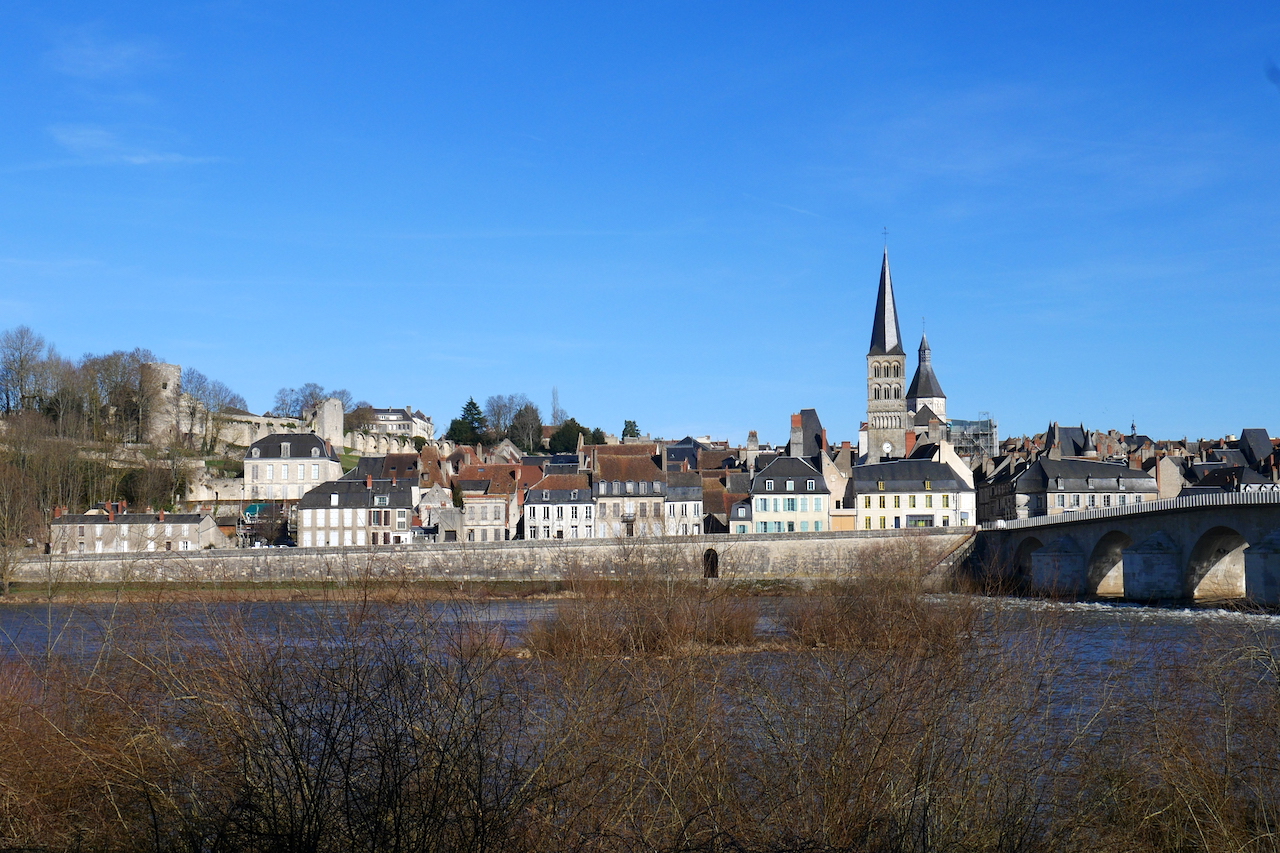
11. Nevers to La Charité-sur-Loire
From this stage, you will follow the Loire to Nantes. Sometimes, your way will take you to discover castles that are impressive for their harmonious architecture, natural areas but also urban areas.
As soon as you leave the city of Nevers, you are in contact with nature and its varied landscapes. You have to take the time to admire the churches you meet and be surprised by the remarkable sites.
Take advantage of the communal gîte in Parigny-les-Vaux to share this stopover in two parts. You can better visit La Charité-sur-Loire and its rich heritage.
8 points of interest
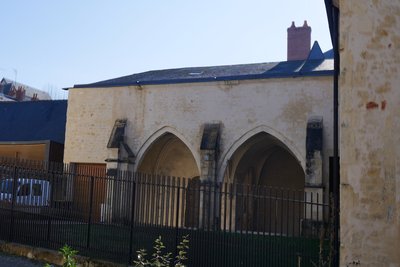
Vestiges de l’abbaye Notre-Dame, Nevers - Amis de saint Colomban St ColumbanNotre-Dame Abbey in Nevers
The beginnings of this abbey of Notre-Dame in Nevers remained for a long time in the shadow of the Babolene monk, trained at the abbey of Luxeuil in the 7th century. The springs are incomplete and archaeology will perhaps clarify the link with Luxembourg monasticism.
Read the report of the 2004 archaeological excavations carried out by the Centre d'Étude Médiéval d'Auxerre
To know more about itToday, in the rue Saint-Genest, there are still remains of the monastic buildings transformed into a retirement home.
More about: Wikipedia
If you have made the detour to rue Saint-Genest, we recommend that you walk a few dozen metres north of the abbey to take rue de la Porte du Croux, and admire the remains of the medieval ramparts that house the Archaeology Museum.
More about: City of Nevers
Stroll through the old streets of Nevers with half-timbered houses

Le Palais ducale et l’esplanade accédant à la Loire - Amis de saint Colomban HistoricalDucal Palace in Nevers
In 1464 in Nevers, Jean de Clamecy, son of Philippe de Bourgogne, inherited the county of Nivernais. He then undertook the construction of a "new hostel" near the old 13th century castle, which has now disappeared. If the building was completed when he died in 1491, the facade that already evokes the Renaissance would be later. The Cleves, his successors, elevated to the rank of dukes and peers of the kingdom in 1538, may have wished to complete the dressing of the castle by offering it an ornament in keeping with the taste of the day and the measure of their rank.
Louis de Gonzague, Duke from 1565 to 1595, continued to beautify it. It adorns the roofs of the south facade with elegant Renaissance and Louis de Gonzague dormers and high chimneys. In 1609, his son Charles I of Gonzaga decided to give the castle an esplanade by building a public square, and the Ducal Palace, symbol of seigneurial power in the capital of the Nivernais, was located on the hill that concentrated the city's various political and religious powers.
To know more: Nevers website
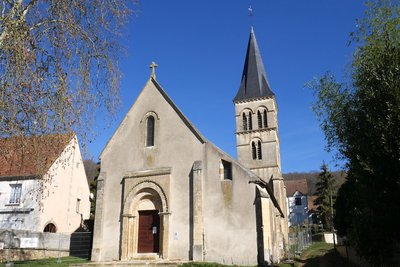
Église Saint-Jean-Baptiste de Parigny-les-Vaux - Amis de saint Colomban TouristSaint-Jean-Baptiste Church of Parigny-les-Vaux
The church of Parigny-les-Vaux is listed, as is one of its stained glass windows. There is also a crypt but access is blocked.
The oldest part to the south dates from the 10th century, the second part from the 11th century.
Inside, in addition to the very beautiful 16th century stained glass window, you can admire beautiful capitals and a 17th century polychrome oak Virgin.
Château de Mimont à Parigny-les-Vaux - Amis de saint Colomban HistoricalMimont Castle of Parigny-les-Vaux
The history of Château de Mimont in Parigny-les-Vaux begins with Count Paul de Lavenne de Choulot, a famous 19th century landscape gardener who lived at Château de Mimont. He is buried in the village cemetery.
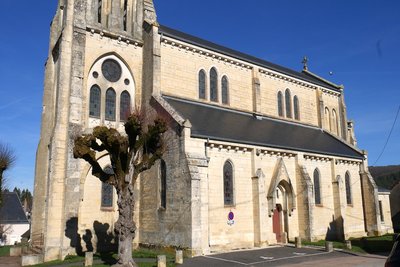
Église Saint-Étienne de Chaulgnes - Amis de saint Colomban TouristSaint Stephen's Church in Chaulgnes
Built in the 19th century from 1867 to 1870, the Saint-Étienne de Chaulgnes church was built on the site of the old 12th century church, which was demolished due to its age.
Today, the building is undergoing the vicissitudes of time and its general condition requires major work. The municipality, anxious to preserve and enhance its heritage, undertook emergency work in May 2002 on the stone facings and the waterproofing of the church.To know more: web croqueur
http://www.web-croqueur.fr/interieur-eglise-de-chaulgnes/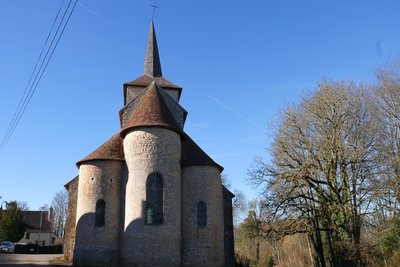
Les absides de l’église de Champvoux - Amis de saint Colomban TouristSaint Peter's Church in Champvoux
Champvoux, a small village near La Charité, has a partially ruined Romanesque church. It is the memory of a former Cluniac priory founded in the 11th century and dependent on Souvigny in Allier. Only the transept and the choir are still standing, while the nave, destroyed during the Wars of Religion, retains only its lateral walls. The building probably dates from the end of the 11th and beginning of the 12th century. The bell tower that covers the building was built in the 16th and 17th centuries, when the church was restored.
More about: Romanesque Burgundy
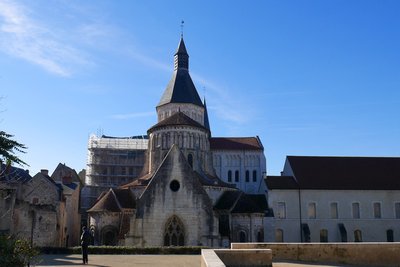
Le chevet de l’église Notre-Dame - Amis de saint Colomban HistoricalNotre-Dame Priory at La Charité-sur-Loire
The construction of the monastery of La Charité-sur-Loire began in 1052 under the prior, Dom Gérard de Cluny, on land given to him by William I, Count of Nevers. However, there had already been one or more pre-existing buildings, revealed by archaeological research in St. Croix Square (in front of the church) in 2015. A monastery named Seyr was reportedly built on this site around the year 700; it was destroyed during the Viking raids of the 9th century.
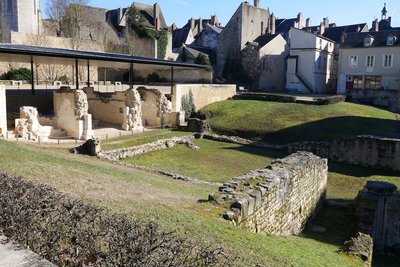
Vestiges de l’église Saint-Laurent - Amis de saint Colomban HistoricalArchaeological digs in the church of Saint-Laurent at La Charité-sur-Loire
The remains of the former Saint-Laurent church of La Charité-sur-Loire, in the Benedictine garden, were discovered in 1975. As in Cluny or Charlieu, it was the secondary church of the monastery that communicated with the chapter house. Dating back to the middle of the 11th century and then part of the first monastery, it was a monastic building dedicated to the liturgy of the deceased. The church was dedicated to St. Lawrence and all the saints and was located in the monks' cemetery. Destroyed by the fire of 1559, it was demolished in the 17th century. The foundations of the church were excavated and researched from 1975 to 1995. From the wide single nave, the bases of the walls and two side gates can be identified. The transept probably had Berry passages. The remains of the bedside, under a canopy, consist of the bases of three apses with decorated column bases and remains of bays, frescos and buttresses. Adjacent to the church was a funeral chapel and service buildings to the east and a monumental 13th century gallery to the south of the nave.
Find out more about Roman Burgundy
Conclusions of the archaeological excavations. Newsletter of the Centre d'études médiévales d'Auxerre
Description
In front of the east side of the cathedral, leave rue de la basilique, cross rue du Cloitre Saint-Cyr.
Turn left into rue de la place Carnot, cross the roundabout and take rue Henri Barbusse which runs alongside Parc Roger Salengro.
Straight on rue Paul Vaillant-Couturier, slightly to the left by avenue Colbert, take the second street on the right then immediately to the left, rue du Banlay, cross the boulevard, continue rue du Banlay. After crossing the railway bridge, rue du Docteur Michel Gaulier for 1.4km.
- Sixth street on the right, take rue de Verdun, first on the left, rue Lamartine, fourth street on the right, Chemin de la Beue, follow the railway track, take the bridge over the highway.
- Cross the Chemin des Cavaliers to take the marked green path "De la Beue au Chaumois" for 9.80 km to Parigny-les-Vaux.
- Take a break at the pond of Niffonds, leave the lake by the Forest Road and continue the Route verte and the Compostelle road from Namur to Vézelay which you take in the opposite direction.
- After 1.9km go straight ahead leaving the Chemin de Compostelle, follow the main road to Petit Mussy, follow the Chemin du Petit Mussy to Parigny-les-Vaux, cross the village on rue des Rosiers.
- At the exit of Parigny-les-Vaux, take two right turns; at the entrance of Pinay, take the Chemin de Compostelle in the opposite direction, until the entrance of Chaulgnes, take rue d'Eugnes at the crossroads on the left rue Jean Fernand Fremillon then second on the left, rue de la Tuilerie and first on the right.
- At Champvoux, turn right then second on the left, Le battoir on the right then second on the left on the D110, cross the bridge on the highway and under the railway, route de Guerigny, first on the right then second on the left, Chemin du Moulin à Vent, follow the railway to Chemin de Voluray turn right.
- Cross the railway, take the right track along the track, Chemin de Compostelle, cross the street of May 8 to continue on the Chemin de Compostelle.
- Take the bridge on the left to cross the railway then on the right, rue des Réservoirs, second street take twice on the left, rue Saint-Jacques, rue des 84 marches, on the right rue des Hostelleries to reach the Prieuré Notre-Dame de La Charité-sur-Loire.
- Departure : Saint-Cyr and Sainte-Julitte Cathedral, 6 Rue Abbé Boutillier, 58000 Nevers
- Arrival : Notre-Dame Church, 9 Impasse Sainte-Croix, 58400, La Charité-sur-Loire
- Towns crossed : Bourgogne-Franche-Comté
Altimetric profile
Transport
Gare SNCF
Avenue de la Gare
58400 La Charité-sur-Loire
Bus Nevers - Parigny-les-Vaux - La Charité-sur-Loire – Chaulgnes – Champvoux – La Charité-sur-Loire
Access and parking
From this stage, you will follow the Loire to Nantes. Sometimes, your way will take you to discover castles that are impressive for their harmonious architecture, natural areas but also urban areas.
As soon as you leave the city of Nevers, you are in contact with nature and its varied landscapes. You have to take the time to admire the churches you meet and be surprised by the remarkable sites.
Take advantage of the communal gîte in Parigny-les-Vaux to share this stopover in two parts. You can better visit La Charité-sur-Loire and its rich heritage.
Report a problem or an error
If you have found an error on this page or if you have noticed any problems during your hike, please report them to us here:








